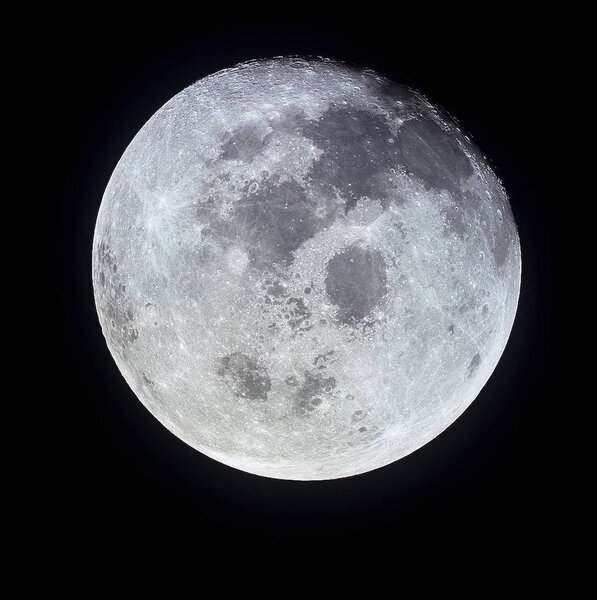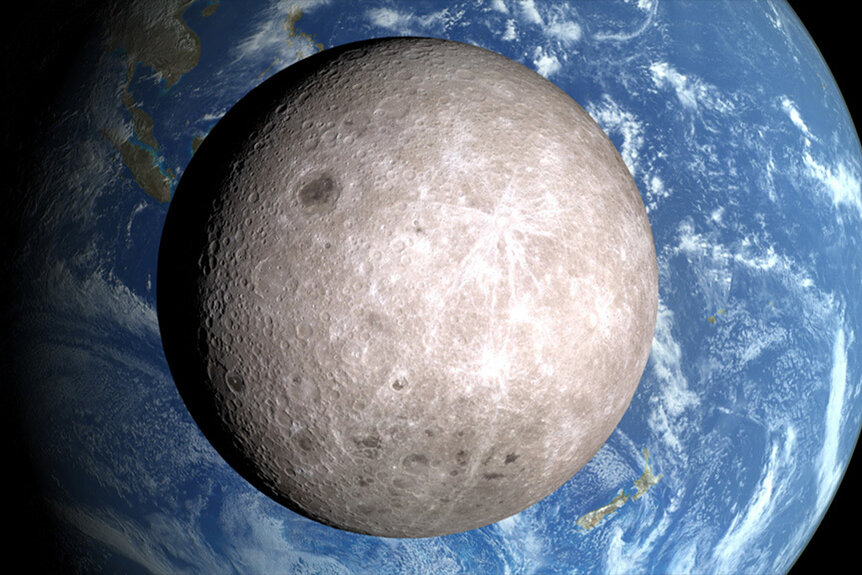Create a free profile to get unlimited access to exclusive videos, sweepstakes, and more!
Everything You Need to Know About August's Sturgeon and Blue Supermoons
Get out your binoculars, because August boasts not just one, but two supermoons!

The 1997 horror comedy An American Werewolf in Paris (streaming now on Peacock) follows the tourist Andy McDermott (Tom Everett Scott) on an unplanned journey... not through the streets of France, but through the supernatural.
RELATED: Everything You Need to Know About the 2023 Perseid Meteor Shower
Being a werewolf wouldn’t be all bad. Sure, you transform into a bloodthirsty monster bereft of any human emotion, but only once a month when the Moon is full. Unless, of course, it’s this month. In August, stargazers will have an opportunity to see two supermoons on August 1 and August 30, 2023.
What Do the Moon Names Mean?
It seems like every few weeks we’re presented with a “once in a lifetime” opportunity to glimpse some new version of the Moon we’ve never heard of. In August 2023, we’re getting two such moons: the Sturgeon Supermoon and a Blue Supermoon.
Keeping a handle on all of the lunar identities out there can be a struggle, but it helps to know that these names are really just combinations of a few common terms. Let’s take a moment to define some terms so that all of this will make a bit more sense.
Full Moon: This one is pretty straightforward. Roughly half of the Moon is illuminated by the Sun at any given time, but we’re not always looking at the Moon’s day side. When the side facing the Earth is fully illuminated, we call that a full Moon.
Blue Moon: You’ve probably heard the phrase “once in a blue Moon” referencing something which only occurs every once in a while. Well, it turns out that “once in a blue Moon” isn’t actually all that rare. A blue Moon refers to anytime there is a second full Moon within the same calendar month. Because the lunar month is shorter than (most) calendar months, this happens at pretty regular intervals, roughly every 33 months.
Supermoon: The Moon orbits the Earth at a distance of roughly 382,500 kilometers (238,000 miles), but that distance isn’t static. It changes over time, thanks to the Moon’s slightly elliptical orbit. It swings back and forth between 405,000 kilometers (252,000 miles) at its farthest point and 360,000 kilometers (224,000 miles). Because apparent size is a product of actual size and distance, that means the Moon looks smaller or larger, depending on where it is in its orbit. When it’s at or near its closest point and full at the same time, we call that a Supermoon.
Sturgeon Moon: This is the weirdest one and the one you’d be most forgiven for being confused about. Isn’t a sturgeon a fish? And what does that have to do with the Moon being full? Really, all that means is that it’s the full moon in August. Throughout history, different cultures have given names to the full Moon throughout the year, usually tied to some other event. May’s full Moon, for instance, is called the Flower Moon, because of the spring blooms occurring around the same time. August’s is called the Sturgeon Moon because of its relationship to historical fishing seasons.
Mash those all together and you end up with some confusingly named astronomical events.
August’s Two Supermoons
The next full Moon is waiting until just after the calendar flips over before coming out. The Moon will be full on August 1, 2023 at the same time it’s nearing the closest point of its orbit. In the Northern Hemisphere, it will reach peak illumination during the day, but will still be plenty bright by the time it rises over the night sky. Because the Moon will be full in August, and be near its closest approach with Earth, we’re calling it the Full Sturgeon Supermoon.
As the month comes to a close, we’ll get another full Moon on August 30. Because it’s the second one in August, it doesn’t get a fancy name like Sturgeon Moon, but it does get the even rarer moniker of a blue Moon. The Moon will once again be near its closest orbital position, giving us a second Supermoon in the same calendar month.
Despite the name, blue Moon’s don’t actually exhibit any particular color change. For that, you’ll have to wait for the next full lunar eclipse. When the Earth’s dark shadow covers the Moon, only light from the redder part of the spectrum gets through, painting the Moon crimson. Mark your calendars for the next complete lunar eclipse, March 14, 2025.
In the meantime, catch the upcoming Supermoons and be wary of werewolves. An American Werewolf in Paris is streaming now on Peacock!




























